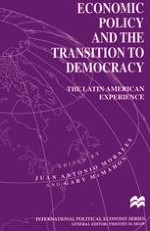1996 | Book
Economic Policy and the Transition to Democracy
The Latin American Experience
Editors: Juan Antonio Morales, Gary McMahon
Publisher: Palgrave Macmillan UK
Book Series : International Political Economy Series
Included in: Professional Book Archive
